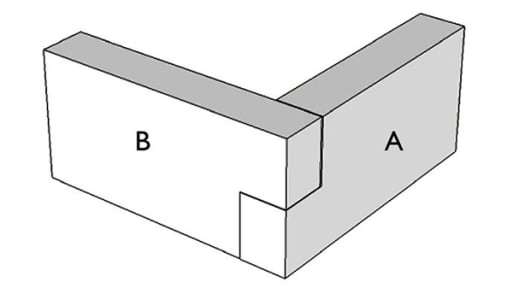How to Install Ledger Stone Wall Facing
Posted by Jenna I. on 7th Jun 2023

If you're trying to bring a natural look to your home, ledger stone wall facing is one of the best DIY projects. Ledger stone wall facing brings the look of natural stone to any surface with the ease of a modular, panel-by-panel installation process. This is far easier than laying natural stone tile -- as well as more affordable.
Prepare Your Installation Surface
Ledger stone wall facings must be installed on flat, clean, smooth surfaces. Generally, they will be installed on drywall sheets or concrete. If the surface isn't perfectly smooth, sanding may be necessary. Clean and dry the installation surface. If the installation surface isn't suitable to your needs, you can either install cement backer board or use thin set mortar. Installations on drywall panels have additional considerations if they are going to be extensive, as they may pull on the drywall or even pull the drywall down. Concrete surfaces and solid surfaces are generally safe for installations of all sizes.
Begin Installing at the Corners

If your installation is going to be along two walls or more, you should begin your installation from the corners moving forward. The ledger stone panels are designed to fit together neatly, and this will avoid any more complicate cutting later on. The corner pieces should all be cut at different lengths so that there are no visible seams. Install each ledger panel by applying mortar at the back using a notched trowel. There should be enough mortar to cover the panel completely, and the panel should be affixed firmly against the wall, starting from the bottom. At the corner, the ledger stone panels should meet together completely.
Working Your Way Up the Wall
If your installation does not exceed 60 inches, you should be able to work your way up the wall without any additional equipment. If your wall needs to be taller, however, you may want to build up your wall to the 60 inches and then wait before completing the installation to the ceiling. If installing on drywall or similar, wall ties may need to be installed inside of the wall to secure it. The additional ledger stone panels will add weight to the wall and it may collapse if it's not reinforced in this fashion. A professional generally does installing wall ties, as it does require access to the interior wall.
Allow to Dry Completely

The newly installed ledger stone facing should be allowed to dry completely for 24 to 72 hours, depending on local humidity. Avoid any extensive activity around your new wall during the drying process that could shift panels loose. If a panel becomes shifted, do not try to place it back using the same mortar -- it will have dried and will not have the same adhesive properties. Scrape the mortar off and use fresh mortar to replace the panel and adhere securely.
Conclusion
Ledger stone wall facing has a tendency to be much more forgiving than traditional tiling due to its modular nature, so it's a great choice for a DIY homeowner. As with any home improvement project, remember to measure twice and cut once! In general, more planning is never too much. If you are installing on drywall, care should be taken not to overburden the wall, as it may become unstable.
About The Author
Jenna I. has been a programmer and content creator for well over a decade and has specialized knowledge in the fields of information technology, web development, web programming, and accounting. She has worked for property management companies, real estate agencies, and public accounting firms, and understands the intricacies of these markets.
The articles and other content contained on this website/blog are provided for informational purposes only and should not be relied upon for any purposes. While it is our goal to provide you with up-to-date, relevant and useful information on a wide range of topics, we make no representations or warranties of any kind, whether express or implied, concerning the reliability, suitability, completeness or accuracy of any of the information made available on this site. The articles and information contained on this site are not intended to provide legal, accounting or other professional or business advice and should not be treated as a substitute for the advice of a professional with knowledge of the facts and circumstances of your specific situation. By accessing this site, you agree that you will not seek to hold E.C. Barton & Company or any of its affiliates liable for any losses or unanticipated costs or assert any other claim based on your use of this site or on the reliance on the content contained herein.


